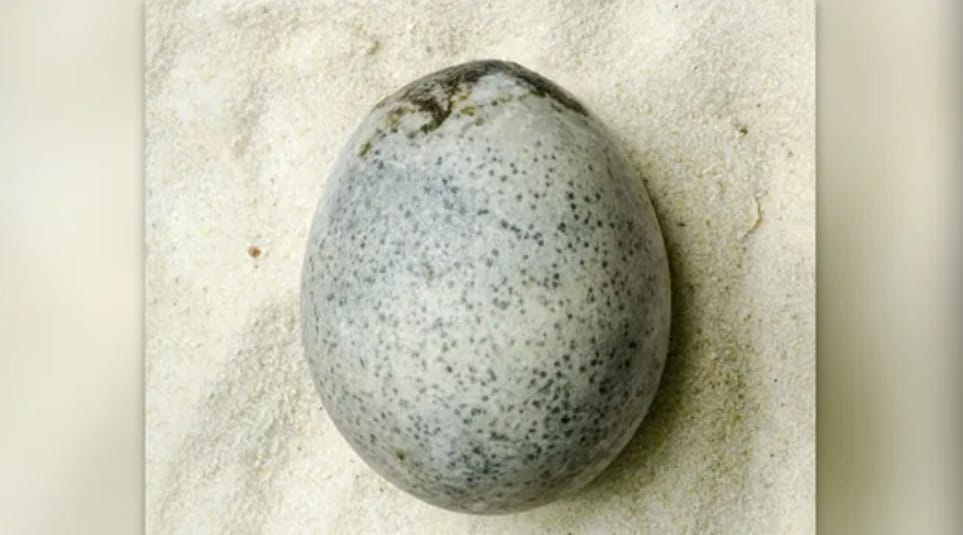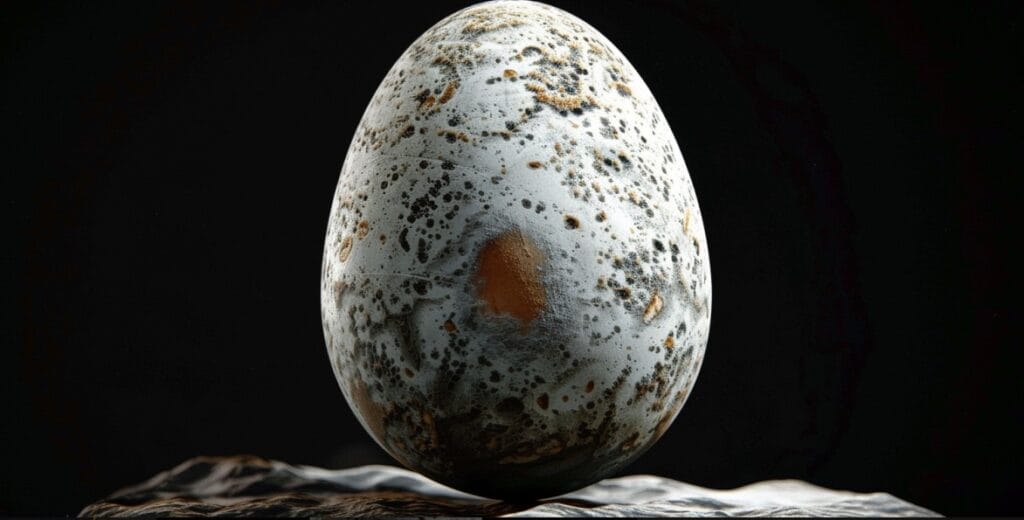
An egg discovered at a Roman site in England that is 1,700 years old still has its yolk and egg white intact, according to a three-dimensional scan.
This is the only time a centuries-old chicken egg has been found intact.
“We were absolutely blown away when we saw the contents in there, as we might have expected them to have leached out,” Edward Biddulph, a senior project manager at the private company Oxford Archaeology, told BBC News.
The egg, discovered several years back, is one of four unearthed during an archaeological dig at a Roman-era location in Aylesbury, a town in central England approximately 20 miles east of Oxford. While three of these delicate eggs broke upon excavation, emitting a strong odor, the fourth one was found in a whole state.
The remaining egg has undergone a microscopic computed tomography (micro-CT) scan at the University of Kent, where numerous X-ray scans are digitally combined to create a virtual 3D model. “It produced an amazing image that indicated that the egg, apart from being intact — which is incredible enough — also retained its liquid inside, presumably deriving from the yolk, albumen etc,” as well as an air bubble, Biddulph said.

Roman Eggs
The eggs were uncovered in a water-soaked pit at the Aylesbury excavation site, which Oxford Archaeology was investigating in preparation for a new housing project. This site revealed signs of human settlement dating back to the Neolithic era, with the pit itself originating from the third century A.D. during the Roman occupation of England.
Oxford Archaeology reported that initially, the pit served for malting grain and brewing beer. However, it was subsequently filled with water and repurposed as a place where travelers could toss coins and various objects as votive offerings to the deities, hoping for fortune.
Typically, organic materials decompose when in contact with oxygen, but the water-saturated soil at this site helped preserve several items. Among these were the eggs, believed to have been presented as offerings, along with a wooden basket, leather footwear, and wooden containers and tools.
While fragments of Roman-era eggshells have previously been discovered, typically in burial sites where they were placed as offerings, the discovery of a whole Roman-era egg in Britain is unprecedented. The only other known intact Roman-era egg was found in the grasp of an infant buried near the Vatican, as reported by The History Blog. This egg, however, was empty and is thought to symbolize rebirth following the child’s untimely death.
The statement from Oxford Archaeology highlighted the Romans’ penchant for attributing symbolic meanings to eggs, linking them to deities like Mithras and Mercury and themes of fertility and renewal.
The unbroken egg from Aylesbury was transported to the Natural History Museum in London for conservation advice, aiming to preserve its integrity. “Senior bird curator Douglas Russell told BBC News that the museum had a collection of mummified bird eggs excavated from the catacombs of sacred animals in Egypt that might be older.
“However, this is the oldest unintentionally preserved avian egg I have ever seen,” he said. “That makes it fascinating.”
Following consultation, the egg has been returned to a museum in Aylesbury. There, archaeologists are exploring methods to analyze its interior without compromising the shell’s condition.
